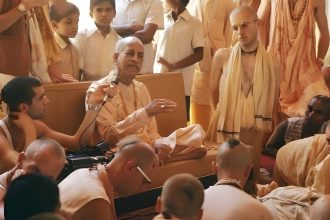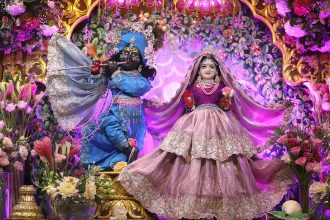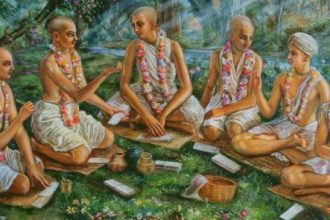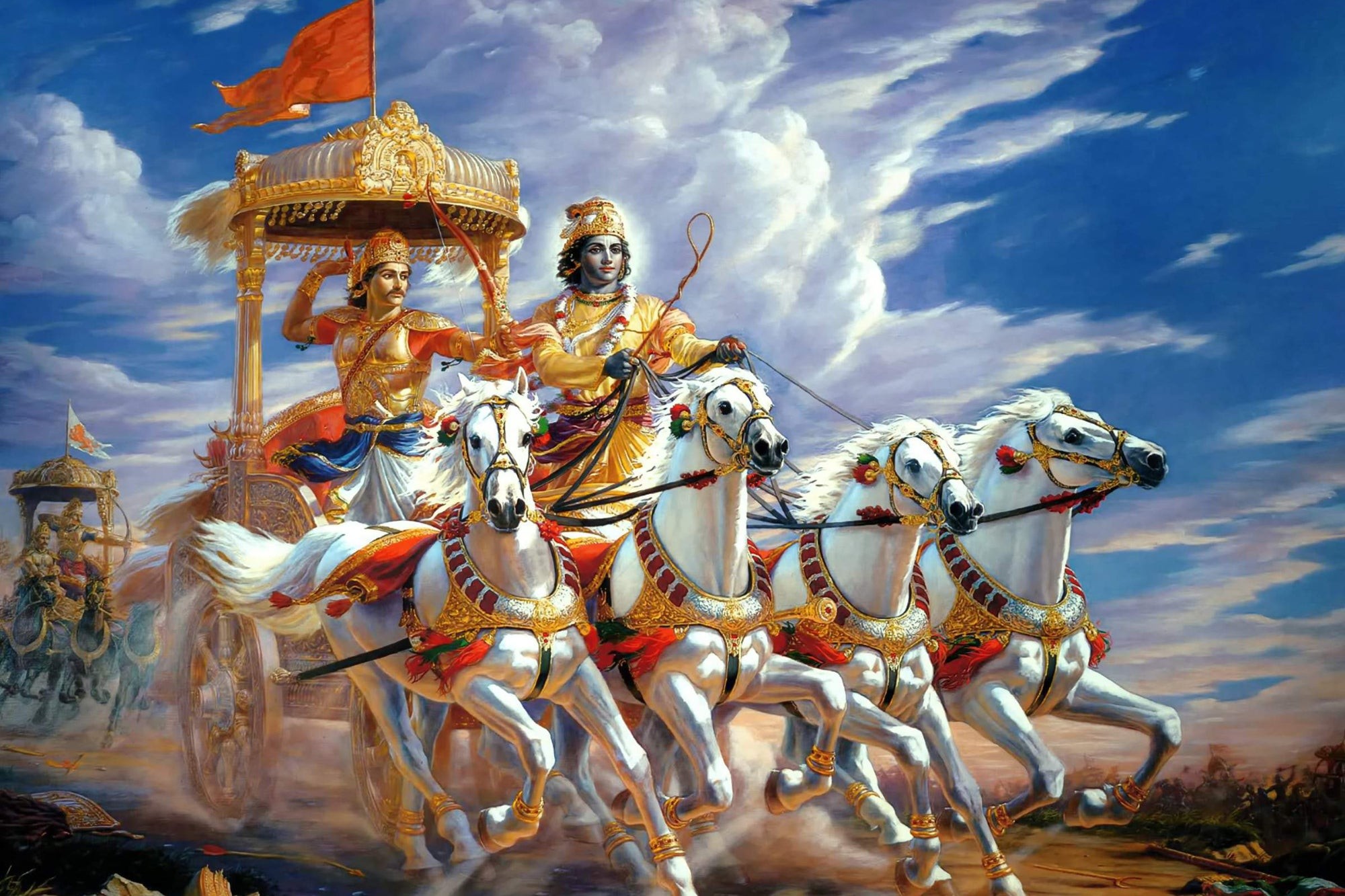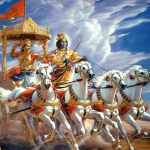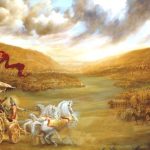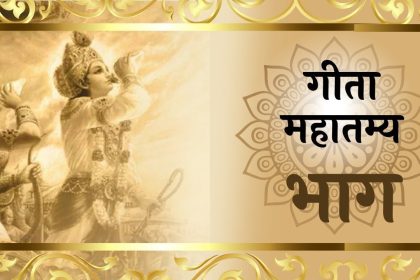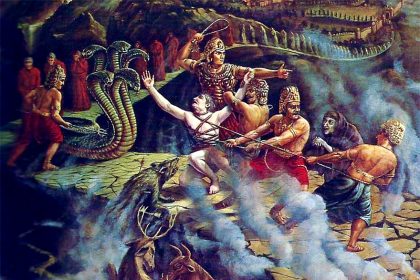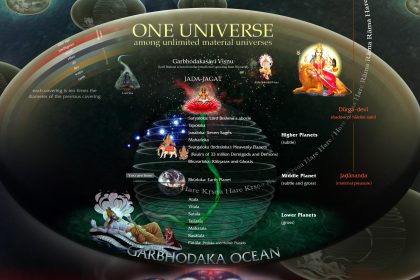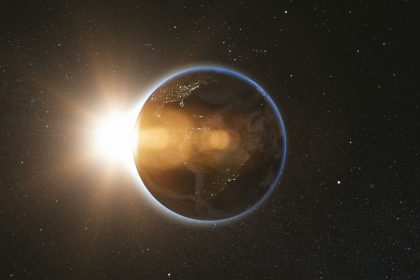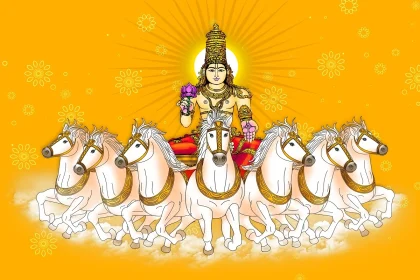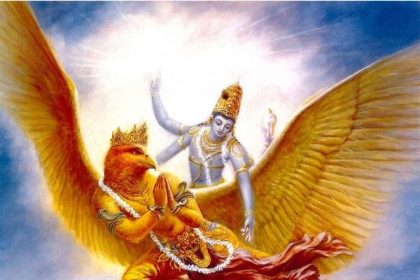Why does Sri Krishna Descend & His Abode
The Lord descends to this mortal world to show His pastimes in Vṛndāvana, which are full of happiness. When Lord Śrī Kṛṣṇa was in Vṛndāvana, His activities with His cowherd boyfriends, with His damsel friends, with the other inhabitants of Vṛndāvana and with the cows were all full of happiness. The total population of Vṛndāvana knew nothing but Kṛṣṇa. But Lord Kṛṣṇa even discouraged His father Nanda Mahārāja from worshiping the demigod Indra, because He wanted to establish the fact that people need not worship any demigod. They need only worship the Supreme Lord, because their ultimate goal is to return to His abode.
The abode of Lord Śrī Kṛṣṇa is described in the Bhagavad-gītā, Fifteenth Chapter, sixth verse:
na tad bhāsayate sūryo
na śaśāṅko na pāvakaḥ
yad gatvā na nivartante
tad dhāma paramaṁ mama
“That supreme abode of Mine is not illumined by the sun or moon, nor by fire or electricity. Those who reach it never return to this material world.”
This verse gives a description of that eternal sky. Of course we have a material conception of the sky, and we think of it in relationship to the sun, moon, stars and so on, but in this verse the Lord states that in the eternal sky there is no need for the sun nor for the moon nor electricity or fire of any kind because the spiritual sky is already illuminated by the brahmajyoti, the rays emanating from the Supreme Lord. We are trying with difficulty to reach other planets, but it is not difficult to understand the abode of the Supreme Lord. This abode is referred to as Goloka. In the Brahma-saṁhitā (5.37) it is beautifully described: goloka eva nivasaty akhilātma-bhūtaḥ. The Lord resides eternally in His abode Goloka, yet He can be approached from this world, and to this end the Lord comes to manifest His real form, sac-cid-ānanda-vigraha [Bs. 5.1]. When He manifests this form, there is no need for our imagining what He looks like. To discourage such imaginative speculation, He descends and exhibits Himself as He is, as Śyāmasundara. Unfortunately, the less intelligent deride Him because He comes as one of us and plays with us as a human being. But because of this we should not consider the Lord one of us. It is by His omnipotency that He presents Himself in His real form before us and displays His pastimes, which are replicas of those pastimes found in His abode.
In the effulgent rays of the spiritual sky there are innumerable planets floating. The brahmajyoti emanates from the supreme abode, Kṛṣṇaloka, and the ānanda-maya, cin-maya planets, which are not material, float in those rays. The Lord says, na tad bhāsayate sūryo na śaśāṅko na pāvakaḥ/ yad gatvā na nivartante tad dhāma paramaṁ mama [Bg. 15.6]. One who can approach that spiritual sky is not required to descend again to the material sky. In the material sky, even if we approach the highest planet (Brahmaloka), what to speak of the moon, we will find the same conditions of life, namely birth, death, disease and old age. No planet in the material universe is free from these four principles of material existence.


